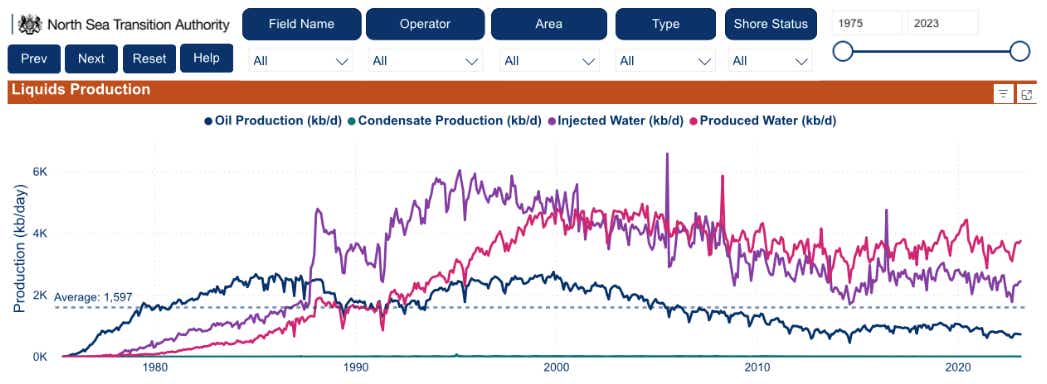A Look at the New Brent Crude Oil Benchmark: An Essential Guide for Traders

A Look at the New Brent Crude Oil Benchmark: An Essential Guide for Traders
Brent Oil Introduces U.S. Pricing into Standard
The Brent Crude oil benchmark, the global price mechanism for crude oil prices, received its first adjustment in decades after Platts—the S&P Global agency that calculates prices for Brent—introduced oil from Texas into its price calculation.
Starting with June deliveries, West Texas Intermediate (WIT) Midland crude oil will be included in the set of oil that Platts uses to price the global benchmark. It is the first time that the benchmark will include oil from outside of the North Sea.
Why Did the Brent Crude Oil Benchmark Change
The global benchmark’s credibility has been called into question recently as the North Sea’s oil production has slowly but surely withered away, reducing volumes that change hands at European terminals between Scotland and Norway. In February, total North Sea oil production stood at 726 thousand barrels per day, down from 2.6 million barrels per day at the start of the millennium.

Image Source: nstauthority.co.uk
If that trend continued without correction, it would potentially make prices susceptible to manipulation and a loss of faith across the markets for governments, customers, and investors who use the benchmark to set prices for underlying products and other economic means.
Platts made the last change to the benchmark in 2002, when it added oil from three Norwegian and one British field to its price mix to boost volumes and increase price discovery. While that move helped the benchmark, production volumes across the North Sea continued to fall.
Oil from major producers like Russia and Gulf producers was considered to fix the problem but concerns about political influence made that a less-than-ideal fix. Instead, Platts saw U.S. oil drilled at Midland, Texas, as the best addition, with its sweet crude oil like what is produced in the North Sea.
Still, Platts needs to account for the cost of moving that oil nearly halfway around the world into its calculations. This makes U.S. oil, which hit global markets in 2015 amid the shale boom, even more influential in the world economy. Today, the United States is among the biggest oil exports in the world.

Image Source: eia.gov
How Could the New Pricing Impact Traders?
About 70% of oil traded around the world references the Brent crude oil benchmark, which makes it enormously important for the global economy. For retail traders, not much has changed, but the proper functioning of the benchmark does mean that the futures and the spot market will remain healthy while the physical market will continue to help market participants hedge their risk and exposure.
While U.S. oil production is expected to slowly decline over the next decade, including Midland in the Brent pricing mechanism may increase U.S. exports by thousands of barrels per day. Energy infrastructure companies like Kinder Morgan or Enbridge may benefit from the change on a long-term basis. For now, the Brent crude oil benchmark lives on as the global pricing standard in the meantime.
Options involve risk and are not suitable for all investors. Please read Characteristics and Risks of Standardized Options before deciding to invest in options.
tastylive content is created, produced, and provided solely by tastylive, Inc. (“tastylive”) and is for informational and educational purposes only. It is not, nor is it intended to be, trading or investment advice or a recommendation that any security, futures contract, digital asset, other product, transaction, or investment strategy is suitable for any person. Trading securities, futures products, and digital assets involve risk and may result in a loss greater than the original amount invested. tastylive, through its content, financial programming or otherwise, does not provide investment or financial advice or make investment recommendations. Investment information provided may not be appropriate for all investors and is provided without respect to individual investor financial sophistication, financial situation, investing time horizon or risk tolerance. tastylive is not in the business of transacting securities trades, nor does it direct client commodity accounts or give commodity trading advice tailored to any particular client’s situation or investment objectives. Supporting documentation for any claims (including claims made on behalf of options programs), comparisons, statistics, or other technical data, if applicable, will be supplied upon request. tastylive is not a licensed financial adviser, registered investment adviser, or a registered broker-dealer. Options, futures, and futures options are not suitable for all investors. Prior to trading securities, options, futures, or futures options, please read the applicable risk disclosures, including, but not limited to, the Characteristics and Risks of Standardized Options Disclosure and the Futures and Exchange-Traded Options Risk Disclosure found on tastytrade.com/disclosures.
tastytrade, Inc. ("tastytrade”) is a registered broker-dealer and member of FINRA, NFA, and SIPC. tastytrade was previously known as tastyworks, Inc. (“tastyworks”). tastytrade offers self-directed brokerage accounts to its customers. tastytrade does not give financial or trading advice, nor does it make investment recommendations. You alone are responsible for making your investment and trading decisions and for evaluating the merits and risks associated with the use of tastytrade’s systems, services or products. tastytrade is a wholly-owned subsidiary of tastylive, Inc.
tastytrade has entered into a Marketing Agreement with tastylive (“Marketing Agent”) whereby tastytrade pays compensation to Marketing Agent to recommend tastytrade’s brokerage services. The existence of this Marketing Agreement should not be deemed as an endorsement or recommendation of Marketing Agent by tastytrade. tastytrade and Marketing Agent are separate entities with their own products and services. tastylive is the parent company of tastytrade.
tastyfx, LLC (“tastyfx”) is a Commodity Futures Trading Commission (“CFTC”) registered Retail Foreign Exchange Dealer (RFED) and Introducing Broker (IB) and Forex Dealer Member (FDM) of the National Futures Association (“NFA”) (NFA ID 0509630). Leveraged trading in foreign currency or off-exchange products on margin carries significant risk and may not be suitable for all investors. We advise you to carefully consider whether trading is appropriate for you based on your personal circumstances as you may lose more than you invest.
tastycrypto is provided solely by tasty Software Solutions, LLC. tasty Software Solutions, LLC is a separate but affiliate company of tastylive, Inc. Neither tastylive nor any of its affiliates are responsible for the products or services provided by tasty Software Solutions, LLC. Cryptocurrency trading is not suitable for all investors due to the number of risks involved. The value of any cryptocurrency, including digital assets pegged to fiat currency, commodities, or any other asset, may go to zero.
© copyright 2013 - 2025 tastylive, Inc. All Rights Reserved. Applicable portions of the Terms of Use on tastylive.com apply. Reproduction, adaptation, distribution, public display, exhibition for profit, or storage in any electronic storage media in whole or in part is prohibited under penalty of law, provided that you may download tastylive’s podcasts as necessary to view for personal use. tastylive was previously known as tastytrade, Inc. tastylive is a trademark/servicemark owned by tastylive, Inc.